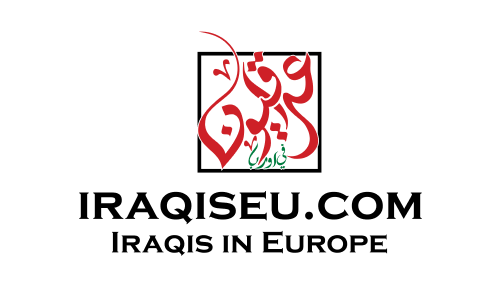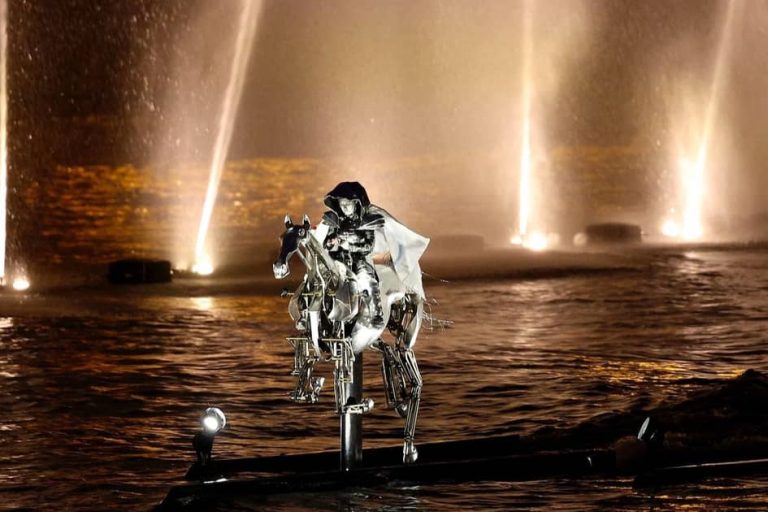The opening ceremony of the Olympic Games in Paris showed courage in fashion. Not only designs from the fashion houses of the luxury group and official Olympic partner LVMH were in the spotlight, young talent was also given a stage.
With the selection of costumes and designers, the artistic direction and costumes directors Thomas Jolly and Daphné Bürki made a statement. Thanks to their efforts, the unconventional designs of French designers Jeanne Friot, Charles de Vilmorin, Kevin Germanier, Alphonse Maitrepierre, Weinsanto and Gilles Asquin were on display at the ceremony on Friday, July 26 in the French capital. The enthusiasm for this queer event, which stood for values such as inclusion, love and freedom, was palpable, both in the stands and in the bar Chez Mylène on the banks of the Seine near the Bastille, where a “Drag Race Party” is regularly held.
“After everything we’ve been through recently with the rise of right-wing ideology, we needed an event like this,” French designer Jeanne Friot tells FashionUnited. In the LGBTQIA+ community, she is best known for her commitment and her role as a fashion spokesperson. She had to prepare the fashion spectacle in the utmost secrecy for a year – a secret that became increasingly difficult to keep as the big day drew closer.
A year ago, Bürki, who had already walked twice for Jeanne Friot, and Jolly were contacted. The creative duo had the idea to create a tableau vivant with the horse and the symbolism of the French resistance fighter Joan of Arc, choreographed by the French dancer Maud le Pladec. The aim was to put young French artists in the spotlight. The organizing committee of the Olympic Games agreed to the idea.
It seemed like a crazy project: firstly because of the main sponsor LVMH, who dominated in many ways and took on the task of dressing the performing stars. Singers Lady Gaga, Aya Nakamura and Céline Dion all wore Dior outfits. Secondly because of the clearly queer-oriented fashion show on the pedestrian bridge Passerelle Debilly.
Joan of Arc with Olympic flag on the Eiffel Tower
“Because of both her first name and her story, this proposal around Joan of Arc was symbolically linked to my story,” Friot explains. “Together with my team, we created a jumpsuit with a belt print – like the dress Bürki wore during my fall/winter 2024 show – and a leather harness made of imitation metal with the French leather artist Robert Mercier.” On his Instagram profile, Mercier is enthusiastic: “I have no words to express my feelings to have participated in this incredible event. I am infinitely grateful. For some time now, I have been looking for peace in my work. You have shown me that you can create incredible projects if you remain honest and benevolent.”
Without knowing who would wear her designs, Friot had to duplicate them and make them suitable for all body types. In addition to what will likely be a historic performance at the opening ceremonies of the Olympic and Paralympic Games, Friot presented her clothes alongside other fashion designers of her generation at the “Neuvième en scène” festival, which showcases the talent of artists in the 9th arrondissement of Paris.
French Fashion Show for Fun and Inclusion
Big names from the French fashion scene, but not necessarily known to a wide audience, took part in the fashion show: Designer Kevin Germanier is known for his love of drag queens. Parisian fashion designer Victor Weinsanto showed a pink Alsatian headdress of printed organza, inspired by Kelsh fabrics – linen, cotton or blended fabrics made in Alsace – and worn by model Ildjima aka Queen Toïde. Other designers presenting their work included Alphonse Maitre Pierre and Gilles Asquin, who designed numerous looks for the TV show “Drag Race France”. The event was musically accompanied by DJ and LGBT icon Barbara Butch.
Floating dancers on the Seine
The sequence featuring dancers on the Seine, sitting on stilts and seemingly floating in the air, was conceived by French designer Charles de Vilmorin, known for his colorful prints.
Friot told FashionUnited that she enjoyed “total creative freedom”, which allowed her to give free rein to her imagination. What seemed most important to her was that the organising committee accepted that the fashion show, so important for the image of Paris as a fashion city, would change. Even Bürki could hardly believe that it would “pass”. But it worked.
This article was originally published on FashionUnited.FR. Translation by AI, editing by Sylvana Lijbaart.


